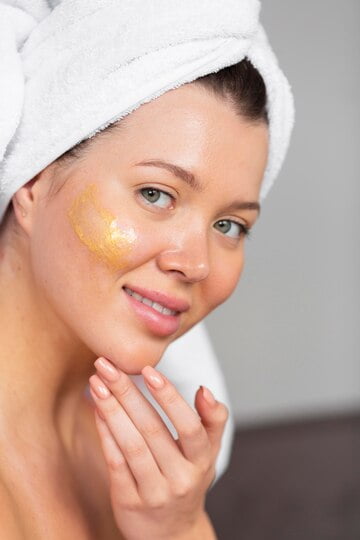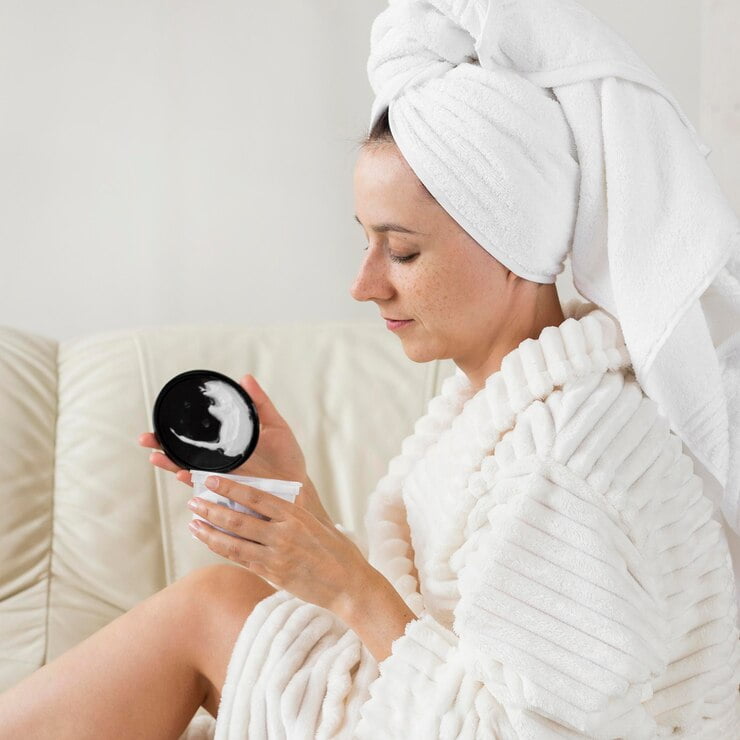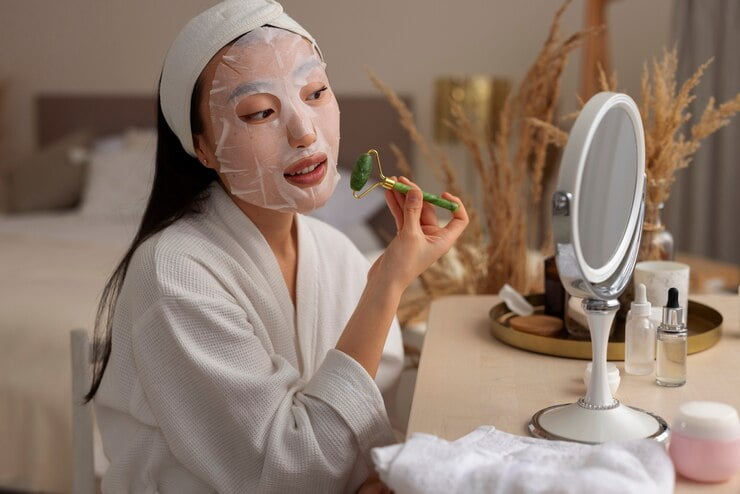Discover the best AM and PM skincare routine for oily skin to keep your complexion balanced and blemish-free. Learn effective tips, products, and ingredients for managing excess oil and achieving radiant skin.

Introduction
Skincare routines are not one-size-fits-all; they must be tailored to individual skin types. For those with oily skin, a specialized morning (AM) and evening (PM) routine can help manage excess oil production, prevent breakouts, and maintain a healthy complexion. In this guide, we’ll delve into the specifics of creating an effective AM and PM skincare routine for oily skin.
Understanding Oily Skin
Oily skin is characterized by excess sebum production, resulting in a shiny complexion, enlarged pores, and a tendency to develop acne and blackheads. People with oily skin often struggle with keeping their skin balanced and free from blemishes.
The Importance of AM Skincare Routine for Oily Skin

Cleansing in the Morning
Start your day with a gentle cleanser to remove any oil buildup and impurities accumulated overnight. Look for a non-comedogenic formula that won’t clog pores but effectively removes excess oil.
Using a Lightweight Moisturizer
Contrary to popular belief, oily skin still needs hydration. Opt for a lightweight, oil-free moisturizer that provides hydration without adding extra shine. This will help balance the skin and prevent it from overproducing oil throughout the day.
Applying Sunscreen
Sunscreen is a crucial step in any skincare routine, especially for oily skin. Choose an oil-free, non-comedogenic sunscreen with at least SPF 30 to protect your skin from harmful UV rays without clogging pores or exacerbating oiliness.
The PM Skincare Routine for Oily Skin

Double Cleansing
In the evening, start with a double cleanse to thoroughly remove makeup, sunscreen, and excess oil. Begin with an oil-based cleanser to dissolve makeup and impurities, followed by a water-based cleanser to deep clean the pores.
Exfoliation
Exfoliation is key for oily skin to prevent congestion and breakouts. Use a gentle exfoliator containing salicylic acid or glycolic acid to remove dead skin cells and unclog pores. However, be cautious not to over-exfoliate, as this can strip the skin and lead to increased oil production.
Treatment Products
Incorporate treatment products targeted towards oily skin concerns, such as serums containing niacinamide or tea tree oil to regulate oil production and minimize blemishes.
Hydrating and Moisturizing
Finish your PM routine with a hydrating moisturizer to replenish the skin’s moisture barrier. Look for oil-free, non-comedogenic formulas that provide hydration without leaving a greasy residue.
Ingredients to Look For
When selecting skincare products for oily skin, opt for ingredients like hyaluronic acid, witch hazel, and benzoyl peroxide, which help control oil production, reduce inflammation, and prevent breakouts.
Here are some product recommendations for an AM and PM skincare routine for oily skin:
Cleansers:
- Neutrogena Oil-Free Acne Wash
- CeraVe Foaming Facial Cleanser
- La Roche-Posay Effaclar Purifying Foaming Gel
Moisturizers:
- Cetaphil Oil Control Moisturizer SPF 30
- Paula’s Choice Skin Balancing Invisible Finish Moisture Gel
- Clinique Dramatically Different Moisturizing Gel
Sunscreen:
- EltaMD UV Clear Broad-Spectrum SPF 46
- La Roche-Posay Anthelios Clear Skin Oil-Free Sunscreen SPF 60
- Supergoop! Unseen Sunscreen SPF 40
Exfoliators:
- The Ordinary Salicylic Acid 2% Solution
- Paula’s Choice Skin Perfecting 2% BHA Liquid Exfoliant
- COSRX BHA Blackhead Power Liquid
Serums/Treatment Products:
- The Inkey List Niacinamide Oil Control Serum
- Sunday Riley UFO Acne Treatment Face Oil
- Murad Acne Control Outsmart Acne Clarifying Treatment
Moisturizers:
- Neutrogena Hydro Boost Water Gel
- Clinique Dramatically Different Hydrating Jelly
- Benton Aloe Propolis Soothing Gel
Facial Oils (optional):
- The Ordinary 100% Cold-Pressed Virgin Marula Oil
- Trilogy Rosehip Oil Antioxidant+
- Herbivore Lapis Blue Tansy Face Oil
Remember to patch-test new products and adjust your skincare routine based on your skin’s individual needs and sensitivities.
Common Mistakes to Avoid
Avoid over-cleansing, skipping moisturizer, and using harsh products that strip the skin’s natural oils, as these can exacerbate oiliness and lead to irritation.
Additional Tips
In addition to a proper skincare routine, maintain a balanced diet rich in fruits, vegetables, and omega-3 fatty acids, stay hydrated, manage stress levels, and schedule regular skin check-ups with a dermatologist.
Conclusion
A consistent AM and PM skincare routine tailored to oily skin can effectively manage excess oil production, prevent breakouts, and promote a clear, healthy complexion. By understanding the specific needs of oily skin and using appropriate products and techniques, you can achieve balanced, radiant skin.
FAQs
Q: What are some lightweight moisturizers suitable for oily skin? A: Some lightweight moisturizers suitable for oily skin include gel-based formulations, oil-free lotions, and water-based serums.
Q: How often should I exfoliate if I have oily skin? A: It’s recommended to exfoliate oily skin 2-3 times a week to prevent congestion and breakouts, but avoid over-exfoliating as it can lead to irritation.
Q: Can oily skin benefit from using facial oils? A: Yes, certain facial oils like jojoba oil or squalane can help balance oil production and hydrate the skin without clogging pores.
Q: Is it necessary to use a toner in an oily skin routine? A: While not necessary, a gentle toner containing ingredients like witch hazel or salicylic acid can help remove excess oil and tighten pores.
Q: Can oily skin types use retinol products? A: Yes, oily skin can benefit from retinol products to improve texture and minimize breakouts, but it’s essential to start with a lower concentration and gradually increase usage to avoid irritation.
